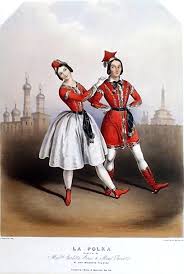Friday, 5 February 2016
Thursday, 4 February 2016
Ireland: Irish dancing is a form of dancing and it originates from Ireland and it could be spilt in two groups, social dances and performance dances. social dancing can be divided into two more things which are the ceili and set dancing. It is danced by four couples, two facing each other. Irish social dance is the national Irish dance that Is performed on special occasions. it varies in dances while set dancing is repeated once you get with another two couple facing you. Irish set dancing became popular in 1994, it became popular in a famous show called the Riverdance. It has many movements that involves foot, legs, arms and a straight back. The solo dances can be preformed with soft shoes which are called "ghillies or pumps" or hard shoes are similar to tap shoes. the Ghillies are only wore by girls and the boys wear black leather shoes called "reel shoes".
Monday, 1 February 2016
 Germany: In the 12th and 13th centaury German poets known as minnesingers performed and composed a piece of music for the love of there courtly love for the dukes known as Hohenstaufen of Franconia and Swabia. The traditional dance in Germany is known as the polka, It originated from a group called the Swabians, they came from Wurtemburg. In the 18th century they settled in a place known as the Austro-Hungarian Empire. The polka comes from the Czech word pulka which means half, this refers to short half steps in the dance. In the early 1840's the world polka was widely introduced in Europe and that is why many people now a days know how to dance the polka. In 1800 Folk music of polka style appeared in written music.
Germany: In the 12th and 13th centaury German poets known as minnesingers performed and composed a piece of music for the love of there courtly love for the dukes known as Hohenstaufen of Franconia and Swabia. The traditional dance in Germany is known as the polka, It originated from a group called the Swabians, they came from Wurtemburg. In the 18th century they settled in a place known as the Austro-Hungarian Empire. The polka comes from the Czech word pulka which means half, this refers to short half steps in the dance. In the early 1840's the world polka was widely introduced in Europe and that is why many people now a days know how to dance the polka. In 1800 Folk music of polka style appeared in written music.
Subscribe to:
Comments (Atom)
